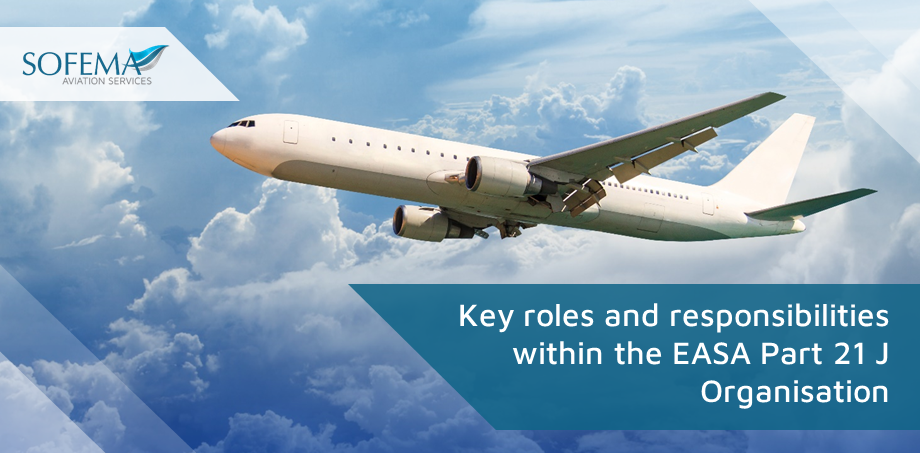Sofema Aviation Services (SAS) www.sassofia.com considers the key roles and responsibilities within the EASA Part 21 J Organisation
Introduction
The following guidance is provided related to the key roles and responsibilities within an EASA Part 21 J organization, as outlined under Regulation (EU) 2022/201 reference – 21.A.239 Design Management System.
By adhering to these roles and responsibilities and addressing the issues of concern with proactive and structured approaches, EASA Part 21 J organizations can effectively manage safety and design assurance, thereby ensuring compliance with regulations and the safety of aviation products.
Key Roles and Responsibilities
Head of the Design Organization (HDO)
- Accountability: The HDO is ultimately accountable for establishing, implementing, and maintaining the design management system.
- Oversight: Ensure that the design management system corresponds to the organization’s size, nature, and complexity, considering the inherent hazards and risks.
- Integration: If applicable, integrate the design management system with additional organization certificates as per Regulation (EU) 2018/1139.
Safety Manager
- Policy and Objectives: Establish, implement, and maintain the organization’s safety policy and related safety objectives.
- Safety Risk Management: Oversee the identification, evaluation, and management of aviation safety hazards and associated risks.
- Safety Assurance: Implement a safety assurance process, including monitoring safety performance and managing changes.
- Safety Promotion: Promote safety within the organization through training, education, and communication.
- Occurrence Reporting: Establish and maintain an occurrence reporting system to contribute to the continuous improvement of safety.
Design Assurance Manager
- Design Control: Establish a system for the control and supervision of design, changes, and repairs, ensuring compliance with applicable certification bases and environmental protection requirements.
- Independent Verification: Maintain an independent verification function to demonstrate compliance with airworthiness, operational suitability, and environmental protection requirements.
- Subcontractor Oversight: Ensure the acceptability of parts or tasks performed by partners or subcontractors.
Key Safety Personnel
Appointed in accordance with point 21.A.245(b), these individuals support the safety manager in implementing the safety management element of the design management system.
Independent Monitoring Function
- Compliance Verification: Verify the organization’s compliance with relevant requirements and the adequacy of the design management system.
- Feedback Mechanism: Provide feedback to key safety personnel and the HDO, facilitating the implementation of corrective actions where necessary.
Issues of Concern and Guidance
- Clear Definition of Roles: Ensure that all roles and responsibilities are clearly defined, documented, and communicated within the organization to avoid overlaps and gaps in the safety management and design assurance processes.
- Training and Competency: Regularly assess and address the training needs of all personnel involved in the design management system to ensure they have the requisite skills and knowledge to perform their roles effectively.
- Change Management: Incorporate a robust Management of Change (MoC) process to handle changes in organizational structure, processes, or external conditions, ensuring that safety and compliance are not compromised.
- Continuous Improvement: Foster a culture of continuous improvement by regularly reviewing and updating the design management system in response to feedback, audit findings, and evolving regulatory requirements.
- Integration and Coordination: For organizations holding additional certificates, ensure seamless integration of the design management system with other management systems to enhance efficiency and effectiveness.
- Stakeholder Engagement: Engage with all stakeholders, including employees, regulatory authorities, and partners, in the development and implementation of the design management system to ensure buy-in and compliance.
Next Steps
Follow this link to our Library to find & download related documents for Free.
Sofema Aviation Services (www.sassofia.com) and Sofema Online (www.sofemaonline.com) provide classroom, Webinar and Online training to support EASA Part 21 J Design Organisation Training & Development. If you have any comments or questions please email team@sassofia.com
Tags:
Aircraft Safety, aviation safety, Aviation Safety Assurance, Compliance, Design Assurance System, Design Control, EASA, EASA Aviation Regulations, EASA compliant, EASA Part 21J Organisation, Monitoring Function, Part 21J, Regulation (EU) 2022/201, Safety Hazards, Safety Personnel, Safety Risk Management, SAS blogs




